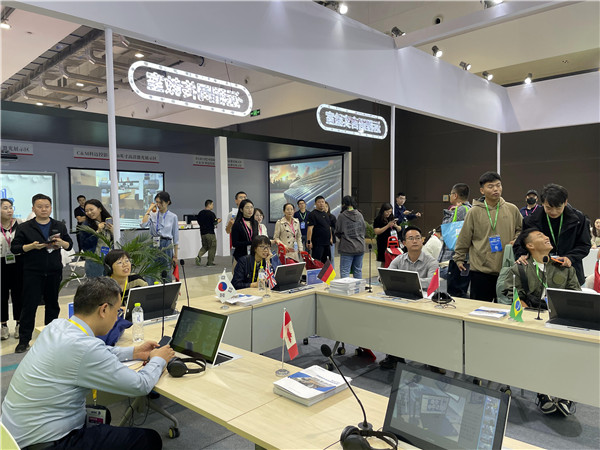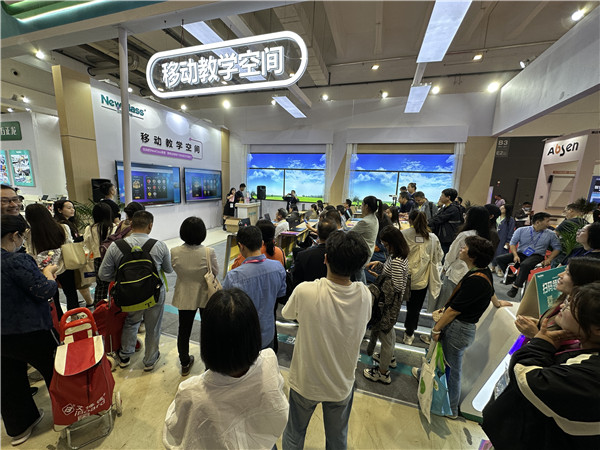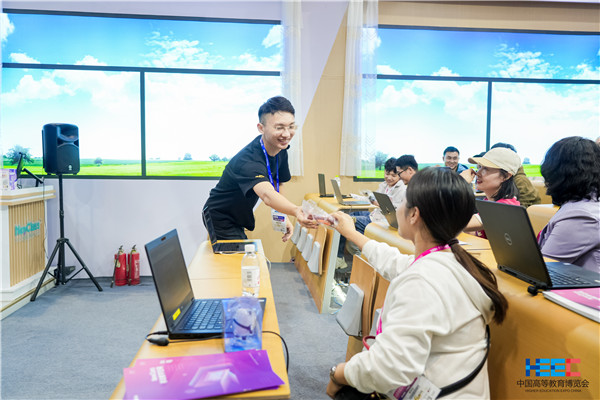From October 12 to 14, the 60th Higher Education Expo China concluded in Qingdao, drawing 100,000 on-site visitors and 15 million online viewers. Beijing NewClass Digital Technology Co., Ltd. booth was located in the Information Technology Exhibition Area.
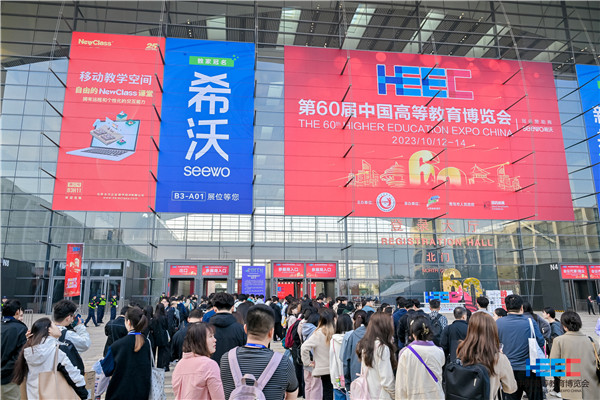
NewClass Mobile Teaching Space, the square glass wall advertisement that greeted visitors outside the log-in hall
NewClass Mobile Teaching Space appeared in the New Achievements and New Technologies Exchange Meeting
In the new achievements and new technologies exchange meeting themed “Creating the Future, Intelligent Education” held in the Higher Education Expo. General Manager Dong Liang introduced “NewClass Mobile Teaching Space”, marking its debut.
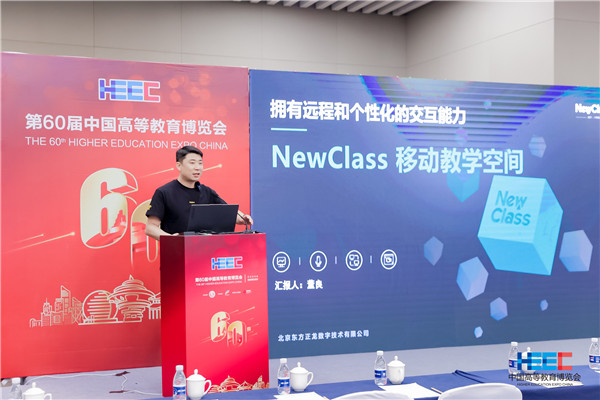
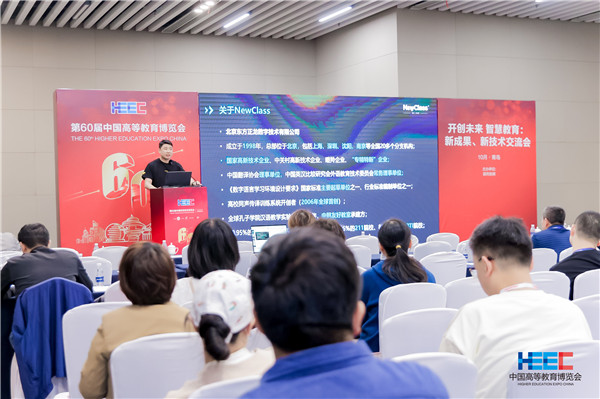
On the occasion of the 25th anniversary of the establishment of Beijing NewClass Limited, riding on the booming trend of digital education, NewClass has developed NewClass Mobile Teaching Space, which makes classrooms more free with remote teaching and personalized interaction, offering solutions for digital upgrades in traditional classrooms.
Debut of NewClass Mobile Teaching Space
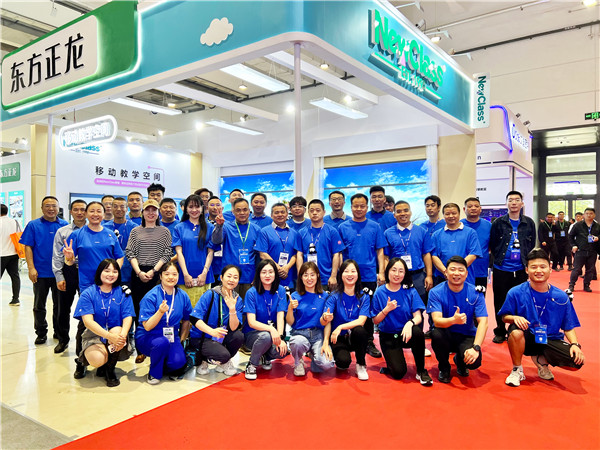
At this year's Expo, “NewClass Mobile Teaching Space” made its national debut. In the immersive simulation of a staircase classroom, where large screens, sound systems and teachers' computers are routinely deployed, NewClass explainers showed the audience the whole process of quickly upgrading a conventional classroom into a digital one.
The “control interface” of NewClass Mobile Teaching Space is simple and convenient. After listening to the explanation, the audience operated the laptop in front of them to experience students speaking in class, courseware learning, discussion and other activities, the visual, real-time interactive digital classroom teaching activities.
Linkage of 3 NewClass Exhibition Areas
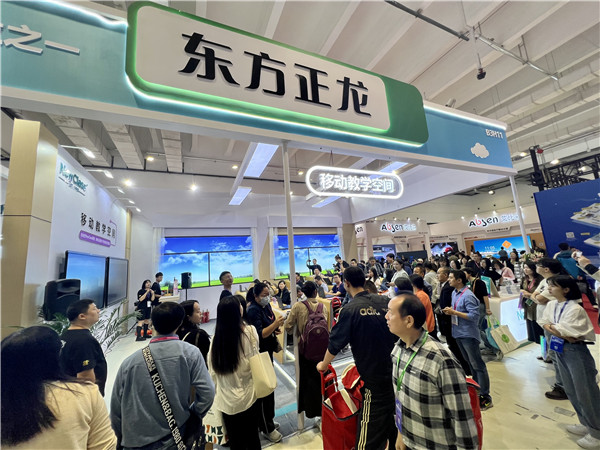
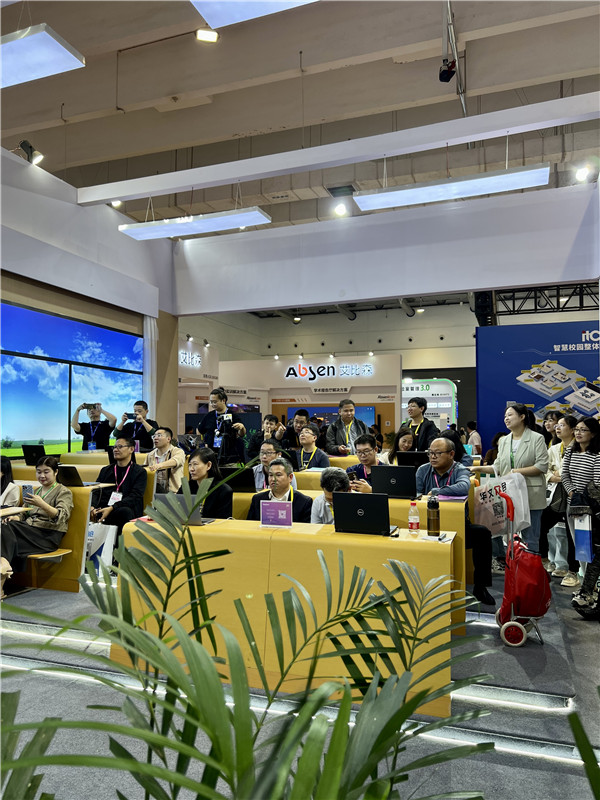
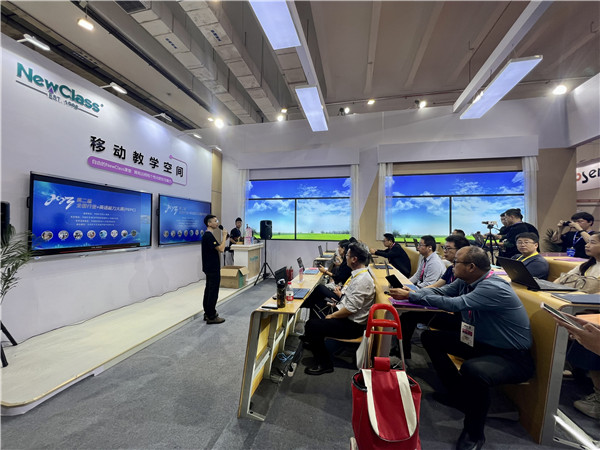
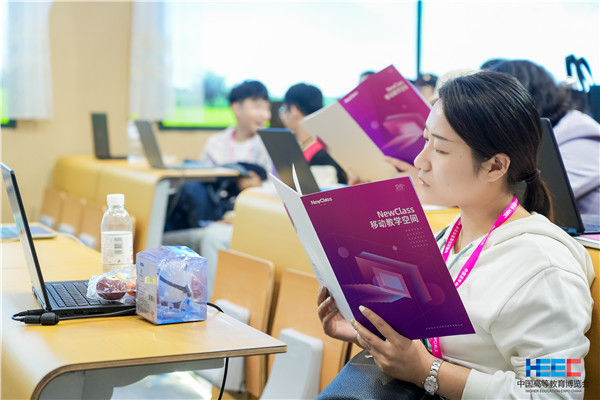
Visitors were seated in “NewClass Remote Simultaneous Interpreting Classroom”, “NewClass Remote Language Lab” or “NewClass Mobile Teaching Space”. With NewClass Remote Teaching System launched by NewClass in 2021, 3 exhibition areas and students logging in from Shanghai formed a digital classroom together——a remote classroom combination, simulating interactions in large classrooms and across spaces. Visitors were able to experience online and offline synchronized classrooms on various terminals such as simultaneous interpreting students’ terminals, language lab terminals and laptops.
